Native American Ribbon Skirt Designs are more than just clothing; they are a vibrant tapestry of history, culture, and symbolism. These skirts, adorned with intricate patterns and vibrant colors, hold a deep connection to indigenous heritage and resilience. Explore the rich traditions and stories woven into every stitch as we journey through the world of indigenous fashion, one ribbon at a time.
What do Native American ribbon skirts mean?
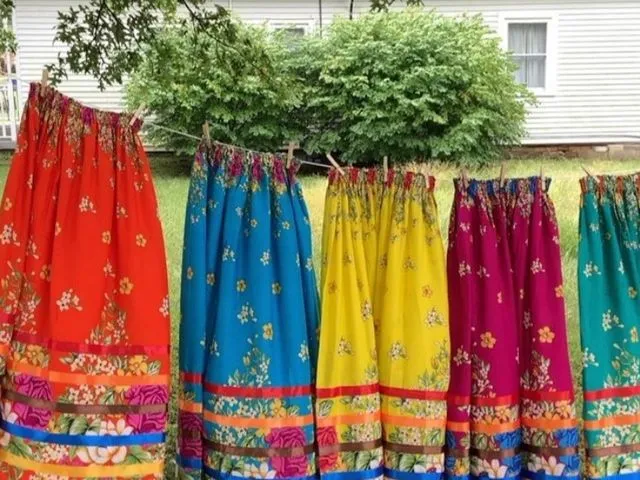
The ribbon skirt, a timeless symbol of womanhood, weaves a powerful connection between the wearer, the Earth, and the Grandmother Moon. In recent years, it has become more than just clothing; it’s a form of self-expression and a testament to the enduring strength of Indigenous cultures.
Across various Indigenous groups, this iconic garment carries rich traditions, stories, and protocols. Let’s delve into the history of the ribbon skirt, guided by the wisdom of Native American Clothes.
The Origin of the Ribbon Skirt
The roots of the ribbon skirt run deep, tracing back to ancient Indigenous traditions. It was born out of a profound respect for the Earth and a deep spiritual connection to the cosmos. As Indigenous communities evolved over time, so did the significance of this symbolic garment.
A Symbol of Womanhood
At its core, the ribbon skirt is a profound symbol of womanhood. It represents the strength, resilience, and nurturing spirit that women embody in Indigenous cultures. Each ribbon, carefully stitched onto the skirt, tells a story, and every color holds a specific meaning.
Connecting to the Earth
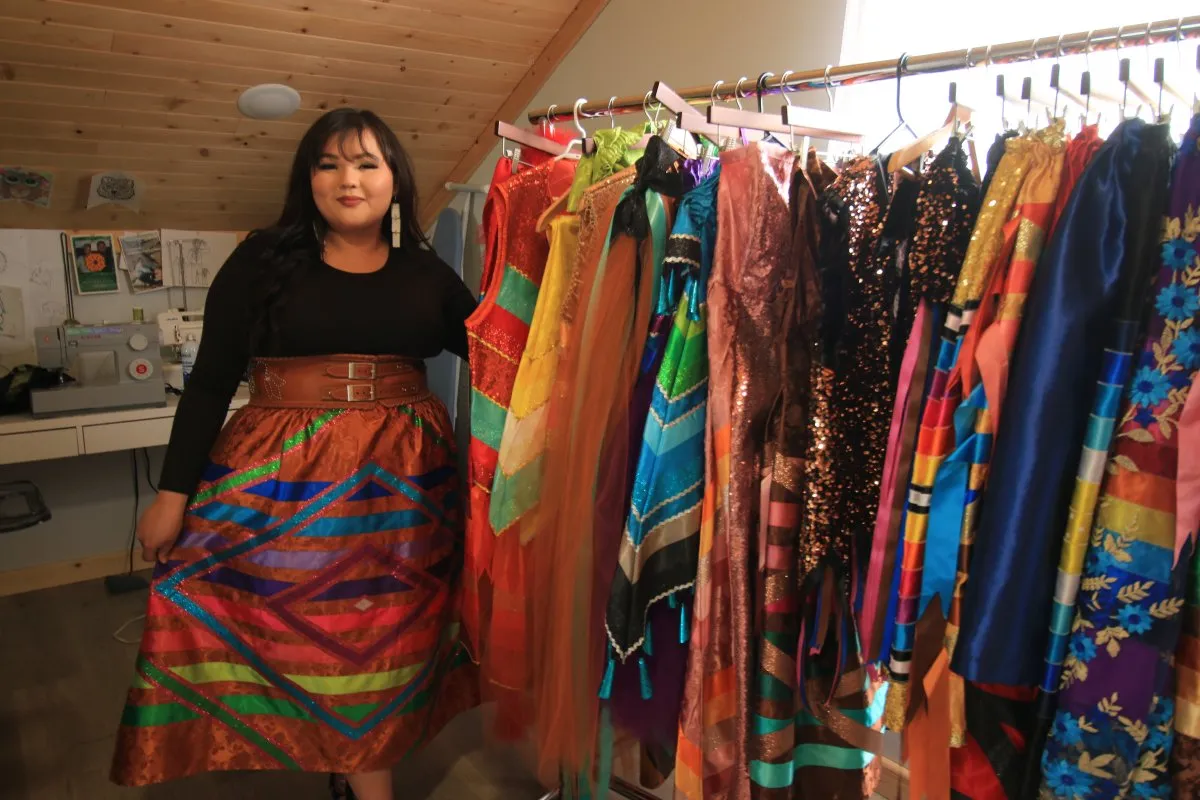
The ribbon skirt serves as a reminder of our connection to the Earth. The act of crafting and wearing it is a ceremonial experience, grounding the wearer in the natural world. It symbolizes the respect and gratitude Indigenous communities hold for the land that sustains them.
Honoring the Grandmother Moon
Just as it honors the Earth, the ribbon skirt pays homage to the Grandmother Moon, a celestial symbol of wisdom and feminine energy. Indigenous cultures have always had a deep reverence for the moon’s cycles, and the skirt’s design often mirrors lunar phases.
A Modern Expression
While deeply rooted in tradition, the ribbon skirt has evolved to become a symbol of contemporary Indigenous identity and pride. Many Indigenous women proudly wear ribbon skirts as an assertion of their heritage and a celebration of their unique stories.
Diverse Indigenous Traditions
Across North America, Indigenous communities have adopted or created their own ribbon skirt traditions. Each group’s designs and stories are distinct, reflecting the rich tapestry of Indigenous cultures.
What is the meaning of the ribbon skirt pattern?
Ribbon skirts, with their vibrant colors and intricate designs, hold a special place in Indigenous cultures. To those unfamiliar with their history, they may appear as distinct fashion statements, but in truth, these skirts are deeply rooted in tradition and identity among Native American women. They bear witness to the resilience, adaptability, and cultural pride of Indigenous communities, transcending time and place.
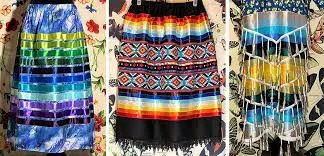
A Symbol of Womanhood and Identity
The ribbon skirt is not merely an article of clothing; it’s a symbol of womanhood and a testament to the strength of Native American women. It represents a bridge between tradition and modernity, as it has found its way from traditional ceremonies to unexpected places like political protests, the U.S. Congress, and even the office of the Minnesota Governor.
A Story of Adaptation and Survival
The journey of the ribbon skirt is a remarkable tale of adaptation and survival. It reflects how tribal communities have embraced elements of Western culture while retaining their unique identity. The skirt, which holds spiritual, sacred, and political significance, carries centuries of history within its seams.
Origins in the 18th Century
The ribbon skirt has its origins in the late 18th century, coinciding with the expansion of relationships between the Great Lakes tribes and French settlers. This period saw increased trade, including the exchange of ribbons, which would soon become a defining element of the skirt. Traditional Ojibwe clothing, previously crafted from animal hides, gradually gave way to garments made from wool and cotton, adorned with the iconic ribbon appliqué style seen today.
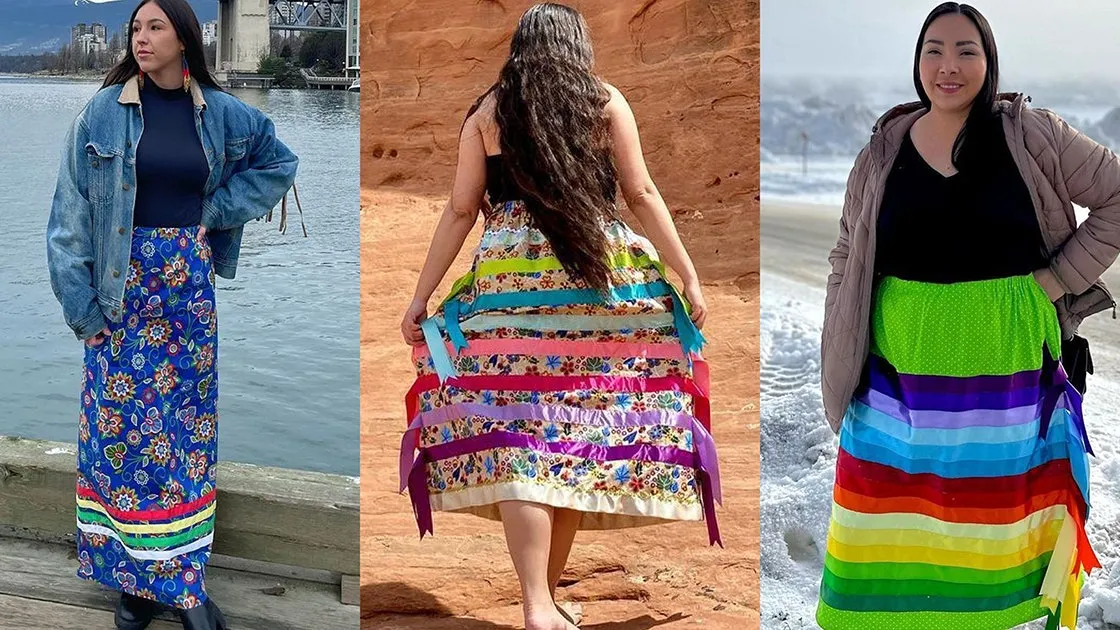
The Rise of Ribbon Work
According to the Milwaukee Public Museum, the first recorded instance of ribbon work appliqué dates back to a Menominee wedding dress created in 1802. Over time, ribbon work reached its zenith in the late 19th century, spreading beyond the Great Lakes to tribes in the Prairies, Plains, and Northeast.
While the materials used to create ribbon skirts may not be native in origin, the method of appliqué that gives the ribbons their distinctive folded appearance has become a visual hallmark of Indigenous cultures.
Preserving Tradition in a Changing World
The ribbon skirt’s enduring presence reminds us of the importance of cultural preservation in a rapidly changing world. It is a testament to the resilience and adaptability of Indigenous communities as they navigate the complexities of modernity while honoring their ancestral traditions. As these skirts continue to grace ceremonial gatherings, political assemblies, and everyday life, they carry forward the stories and legacies of Native American women, celebrating their enduring strength and unique identity.
Can you wear a ribbon skirt if you’re not Indigenous?
Ribbon skirts, a vibrant and symbolic form of attire, hold diverse meanings for those who wear them. Each skirt carries a unique narrative, but at its core, it represents resilience, cultural revival, and a poignant history of oppression and revival.
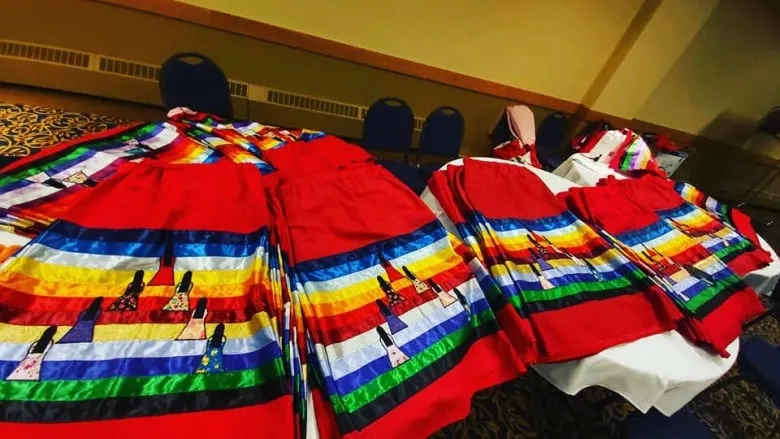
A Glimpse into History
In the 1800s, Indigenous ceremonies and the associated clothing and ceremonial items faced severe restrictions under the Canadian government’s Potlatch Law. This dark period stifled cultural expression and connection for Indigenous communities. Ceremonies that had thrived for generations were silenced, leaving an indelible mark on the collective memory.
It wasn’t until 1951 that these ceremonies regained their legal status, marking a pivotal moment in the journey of Indigenous resilience and cultural reawakening. This history underscores the profound significance of ribbon skirts and the resilience they represent.
The Power of the Ribbon Skirt
Ribbon skirts are not just garments; they are powerful embodiments of ceremony and should be treated with the utmost respect. They hold the stories of Indigenous communities, passed down through generations, and serve as a testament to the strength and resilience of those who wear them.
A Call for Reflection and Respect
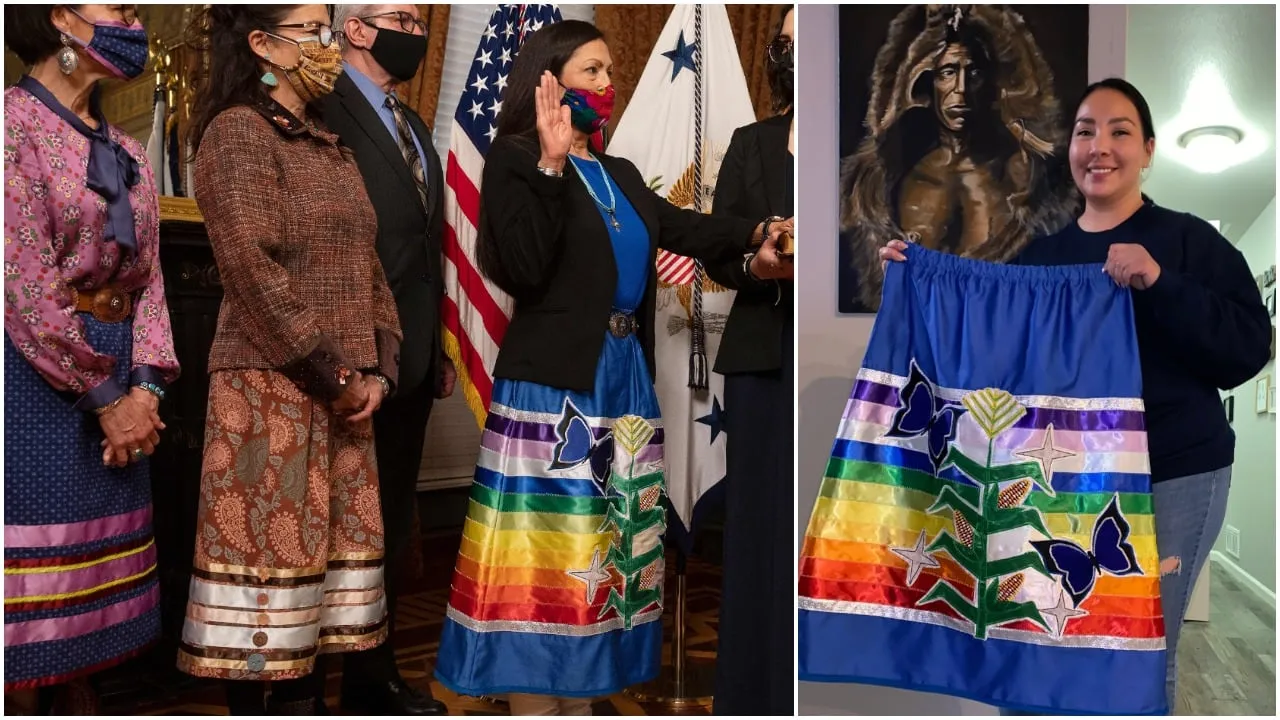
For those outside Indigenous communities who wish to wear a ribbon skirt, it is crucial to pause and reflect. Consider why you want to wear this sacred attire and whether it aligns with the principles of respect, cultural appreciation, and reconciliation.
Supporting Indigenous Resilience
Wearing a ribbon skirt as a non-Indigenous person can be a meaningful gesture of solidarity, but it must be approached with sensitivity and understanding. It should be a step toward supporting the resilience of Indigenous peoples and their rich cultures, rather than a mere fashion statement.
In conclusion, ribbon skirts are more than just fabric and ribbon; they are woven with the threads of history, resilience, and cultural revival. They stand as a testament to the enduring spirit of Indigenous communities and the importance of respect, understanding, and support in the journey towards reconciliation.



